Author: sciencefunkids
Separate salt from pepper instantly!
Materials: plastic spoon pepper and salt Procedure: Rub the spoon on a wool sweater and place it next to the salt and pepper. Watch the pepper lifted to the spoon! Explanation: Plastic spoon is charged through rubbing it to the sweater. Pepper is lighter than salt, hence it jumps first to the electrically charged plastic…
Read MoreBend running water from distance!
Materials: comb running water Procedure: Rub a comb to your head and place it next to a stream of water. Watch the stream bend! Explanation: When you rub the comb to your hair, electrons move from hairs to the comb. When you approach the water, the negatively charged comb repels the electrons found in the water.…
Read More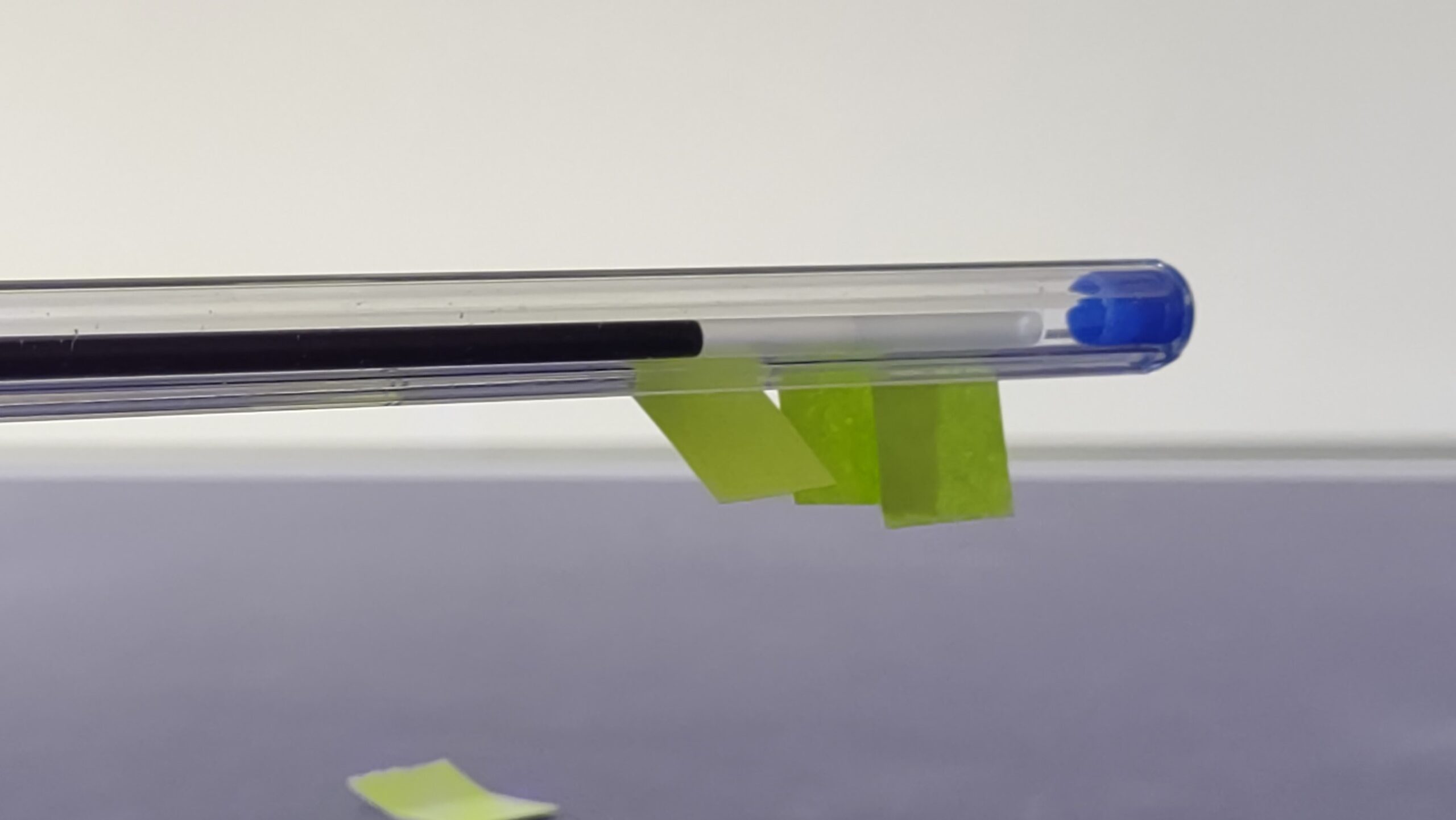
Pick up small scraps of paper without touching them!
Materials: plastic pen small scraps of paper Procedure: Rub a plastic pen on the wool sweater and hold it near small pieces of paper. Watch the small pieces of paper stick attach to the pen. Explanation: When you rub the plastic pen to the wool electrons move from the sweater to the pen. Next positive…
Read More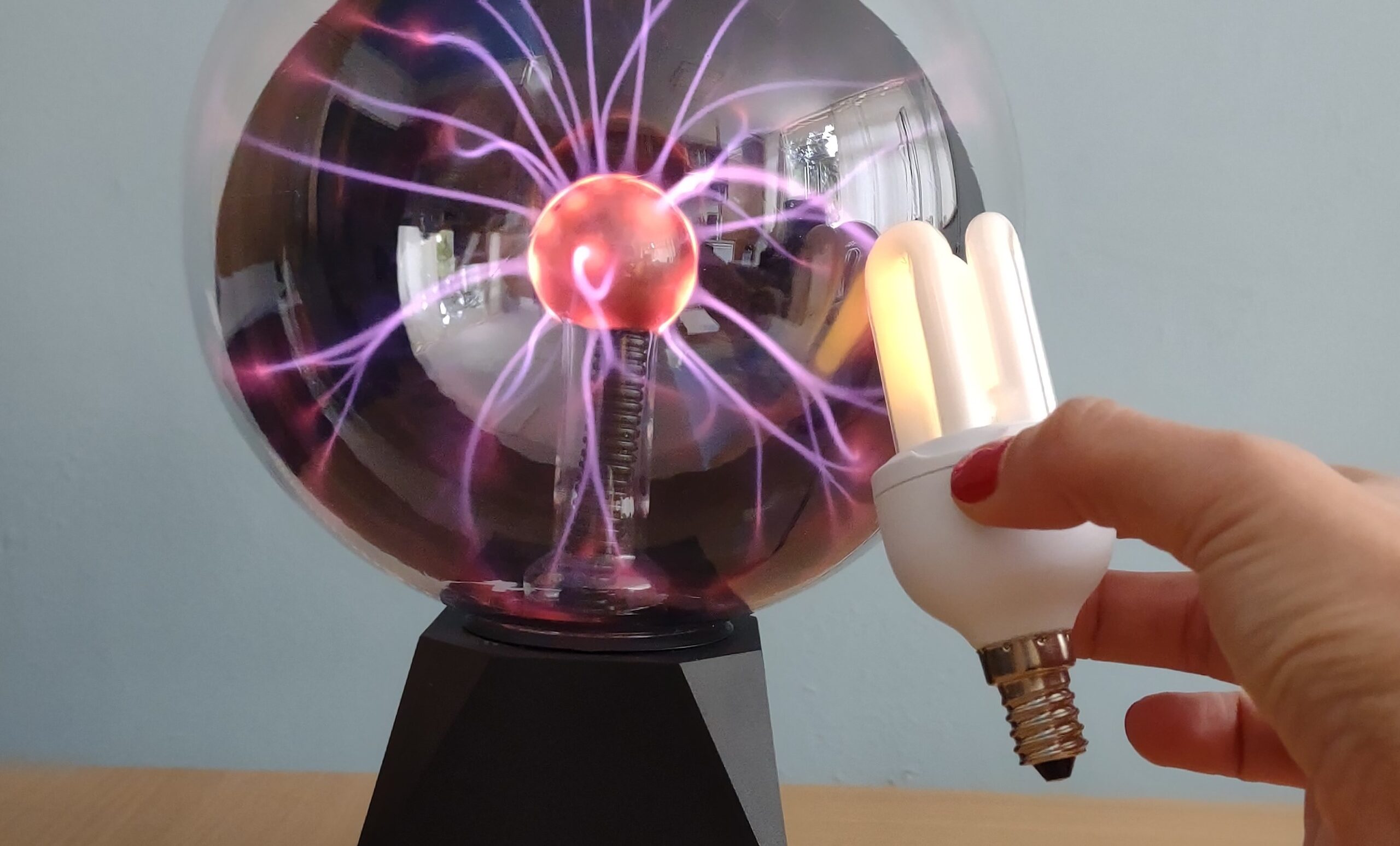
Light the fluorescent bulb using a plasma ball!
Materials: Plasma ball Fluorescent light bulb (any type) Procedure: Place the fluorescent bulb close to the plasma ball and watch it light up!!! Explanation: A plasma ball is a sealed glass containing low-pressure noble gases. A high voltage electrode sits in the center of the ball, connected to the power source. When the ball is…
Read More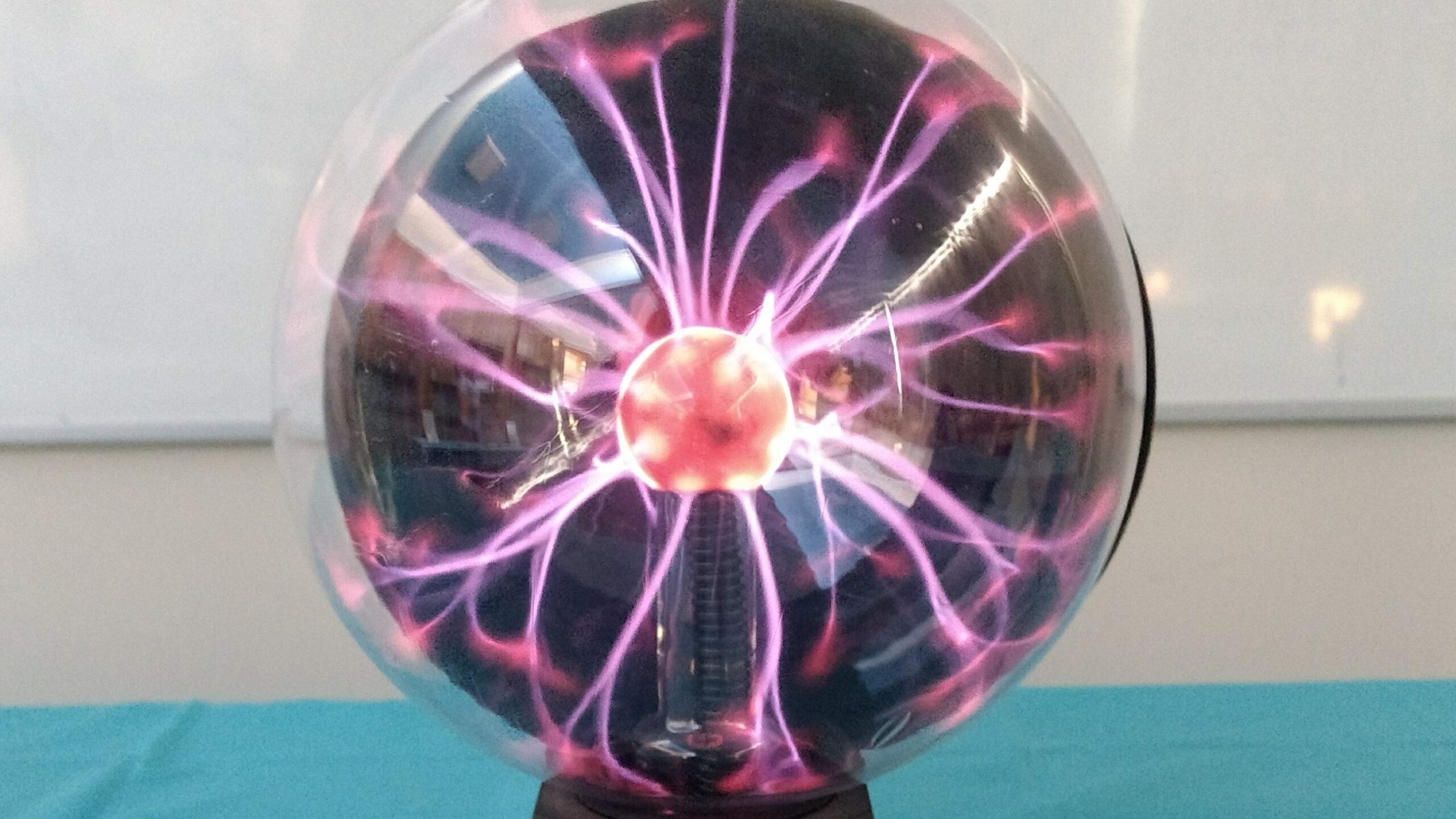
Plasma ball
Materials: Procedure: Touch the plasma ball with your fingers and watch the plasma filaments. Explanation: A plasma ball is a sealed glass containing low-pressure noble gases. A high voltage electrode sits in the center of the ball, connected to the power source. When the ball is turned on, electrical current ionizes the gas in the…
Read More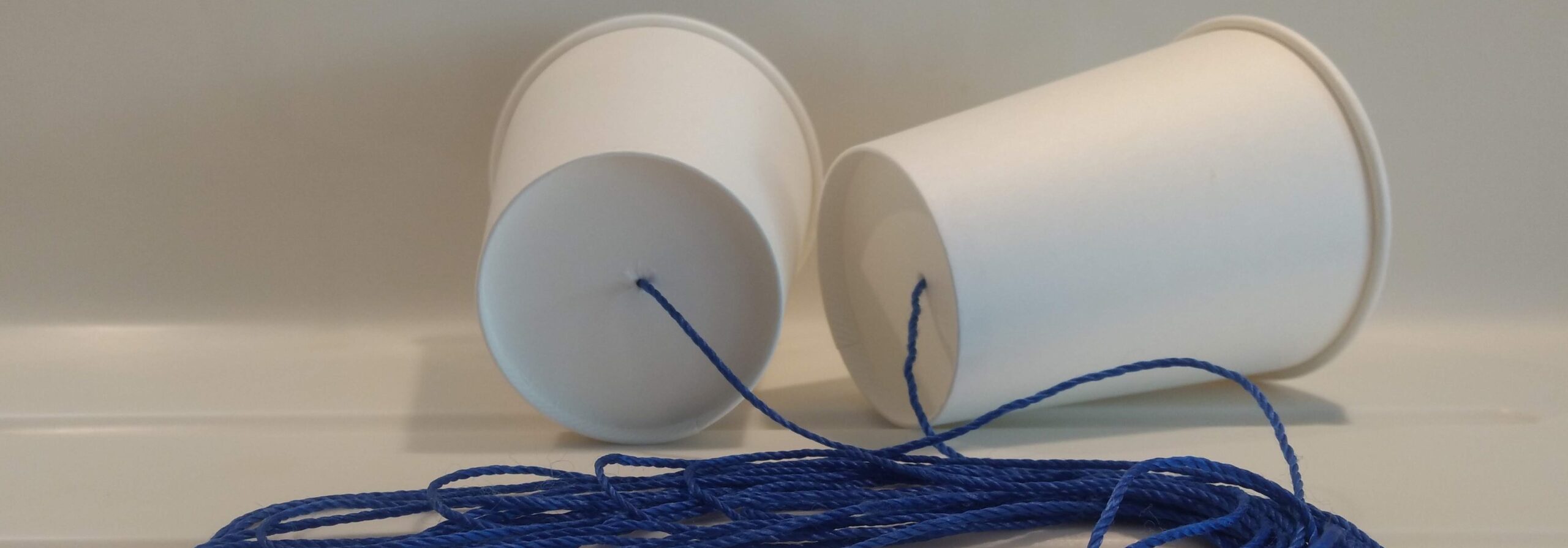
Lets make a string phone!
Sound waves are longitudinal waves with frequency between 20 Hz and 20,000 Hz, that travel through air, solids or liquids. Materials: 2 paper cupboards 3m string Procedure: With a pencil make a small hole in the bottom of each cup and pass the end of the twine inside each cup. Tie 3 knots at the ends…
Read More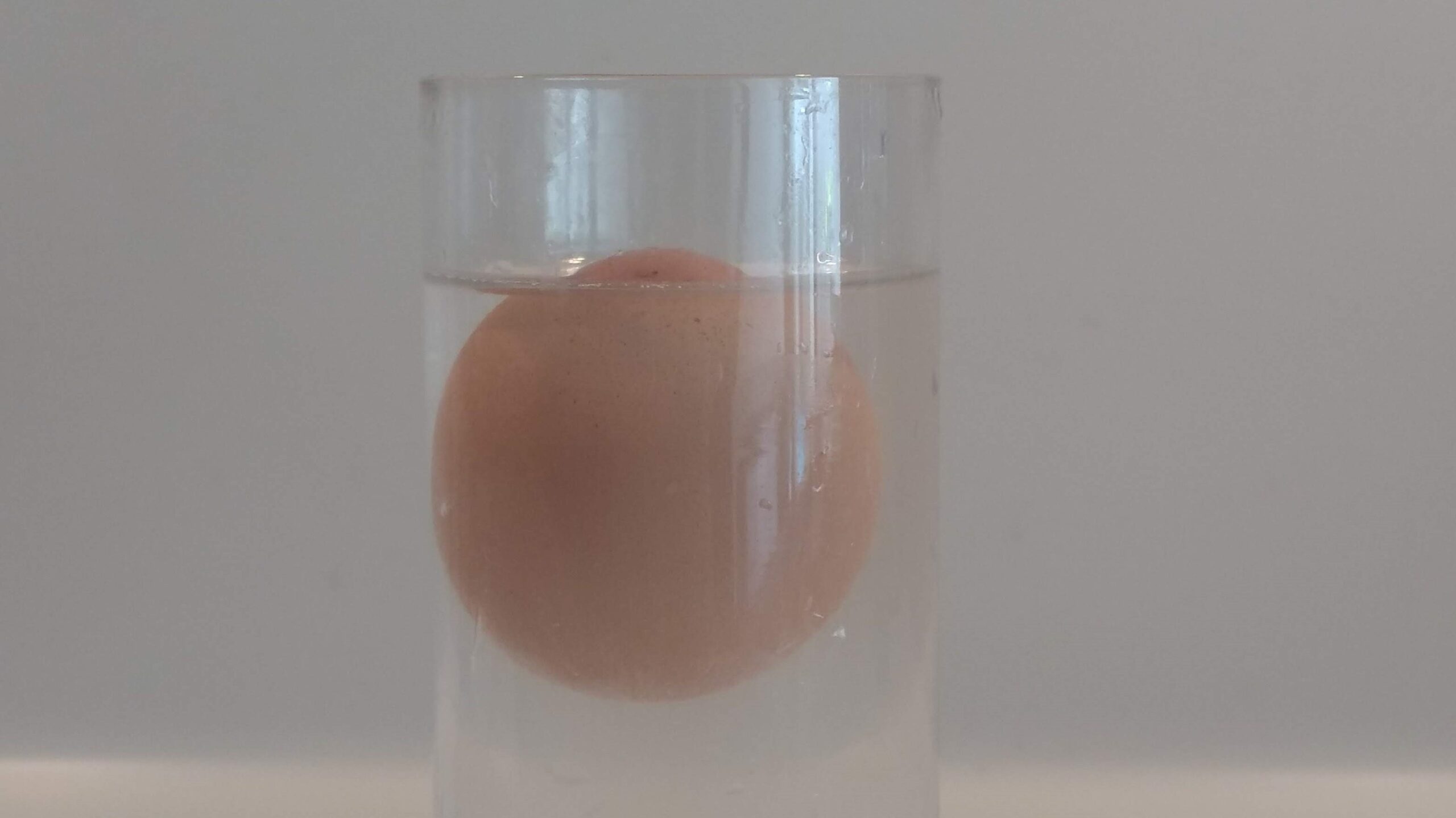
Floating Egg!
Materials: • An egg• Glass of water• Salt Procedure: Fill a glass with water and place the egg into it. Notice that it sinks. Add salt into the water and stir until it is dissolved. The egg is now floating!! Explanation: The egg will sink in water because its density is higher than the density…
Read More
Bouncing Eggs!!
Materials: • An egg• Glass• Vinegar Procedure: Fill a glass with vinegar and let an egg soak in it. The next day notice that the egg has turned into a rubber ball. You can now bounce it!! Explanation: The eggshell is made of calcium carbonate which makes it hard. The calcium carbonate will absorb the acid of the vinegar…
Read More
Remove a coin from water without getting wet
Materials: Candle Glass plate coin water Procedure: Place a coin on a plate and pour a little water. Light a candle and place it in the middle of the plate. Cover the candle with an inverted glass and watch the water sucked up in the glass!! Explanation: The oxygen in the glass is consumed in…
Read More
Upside down Glass of water without spilling
The earth is surrounded by atmosphere. The atmosphere consists of a mixture of gases called atmospheric air. Atmospheric air exerts pressure (atmospheric) on each body inside it, which is due to the weight of the air. Materials: Glass of water Piece of Paper Procedure: Fill a glass with water and place a piece of paper…
Read More